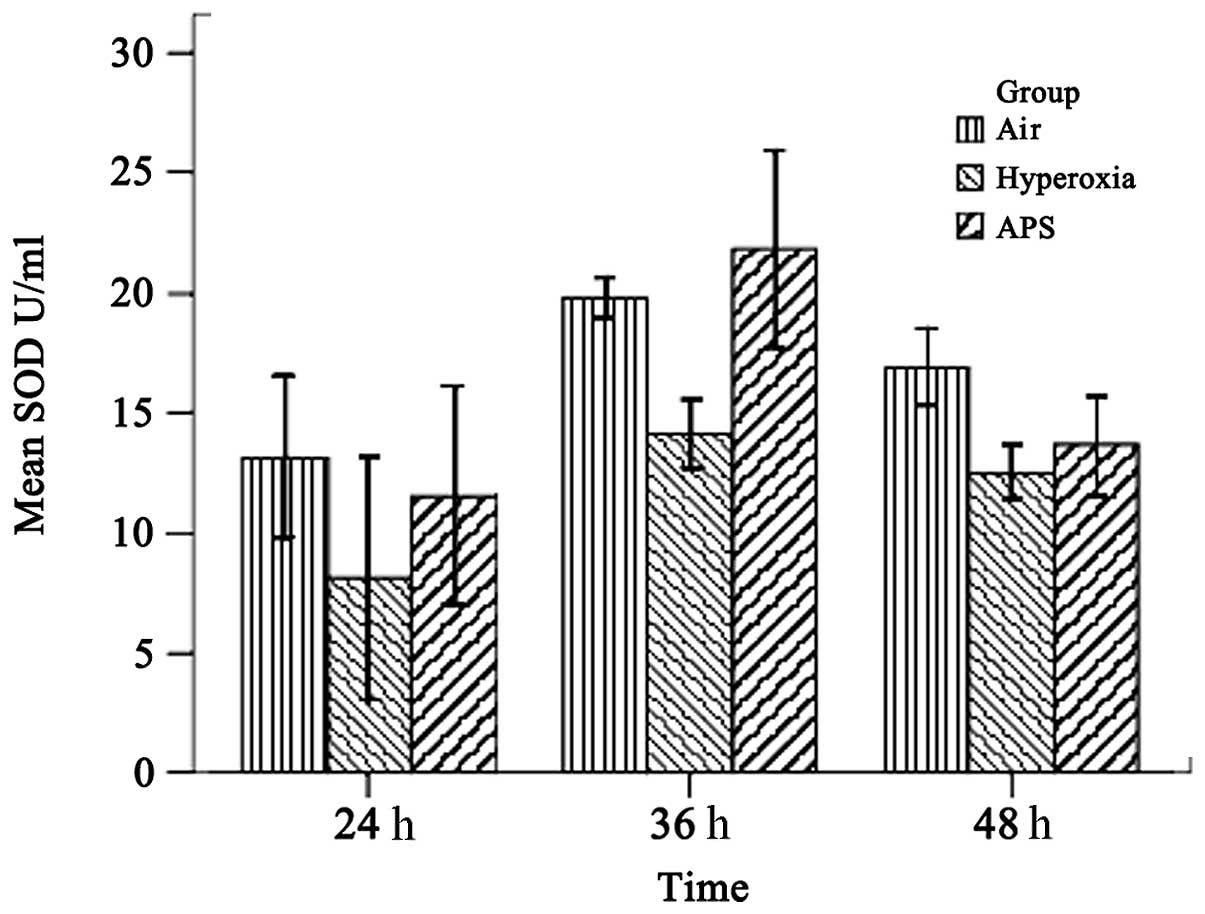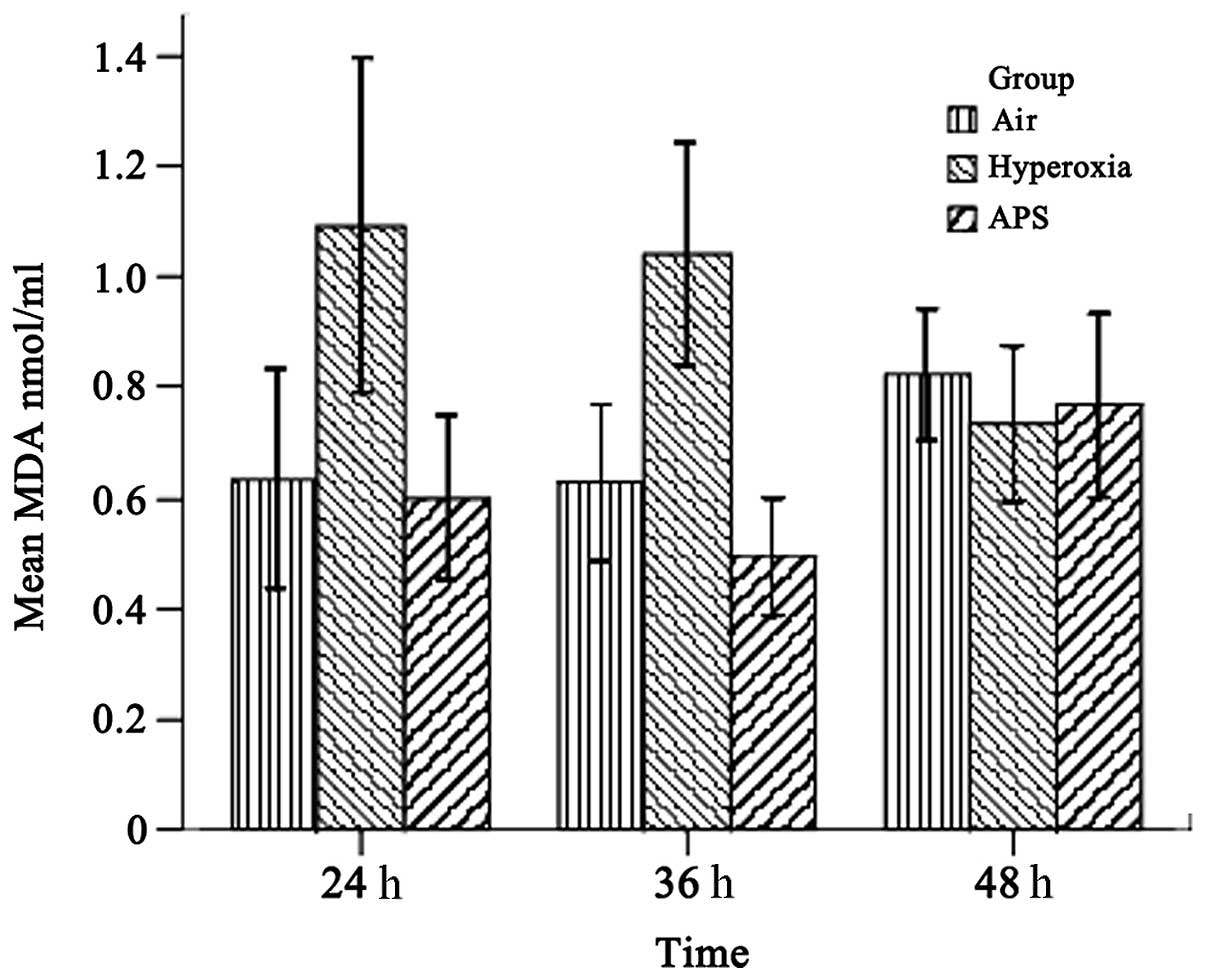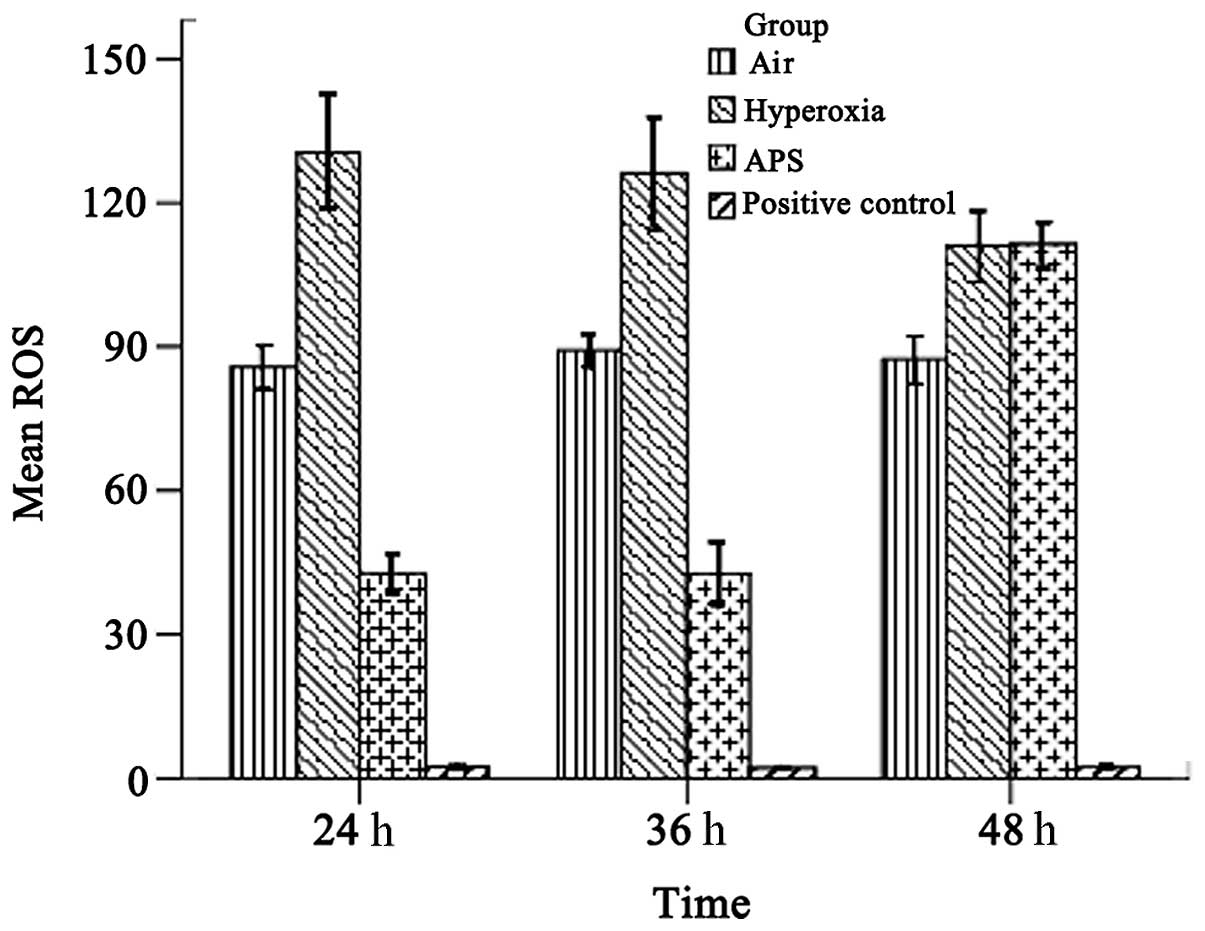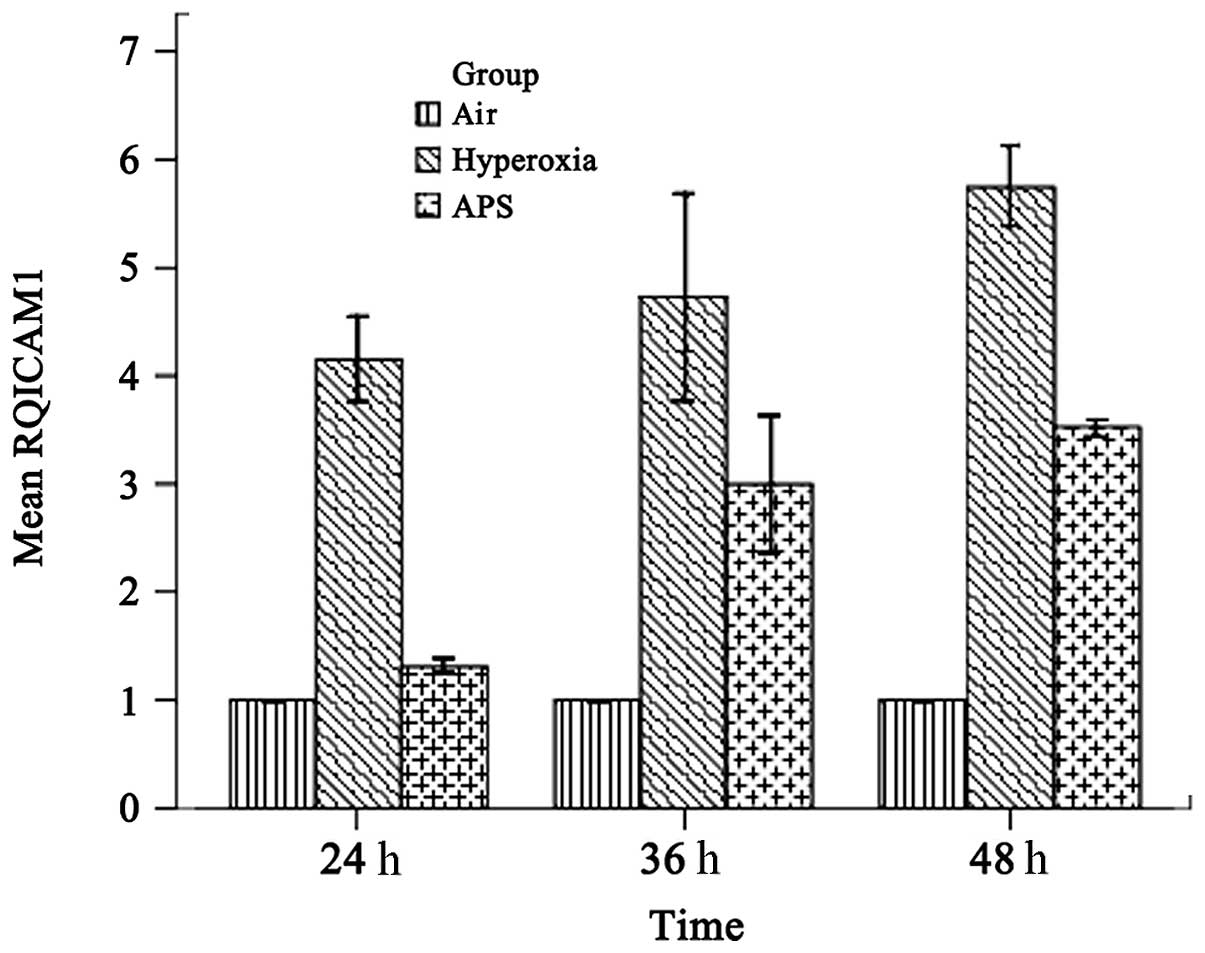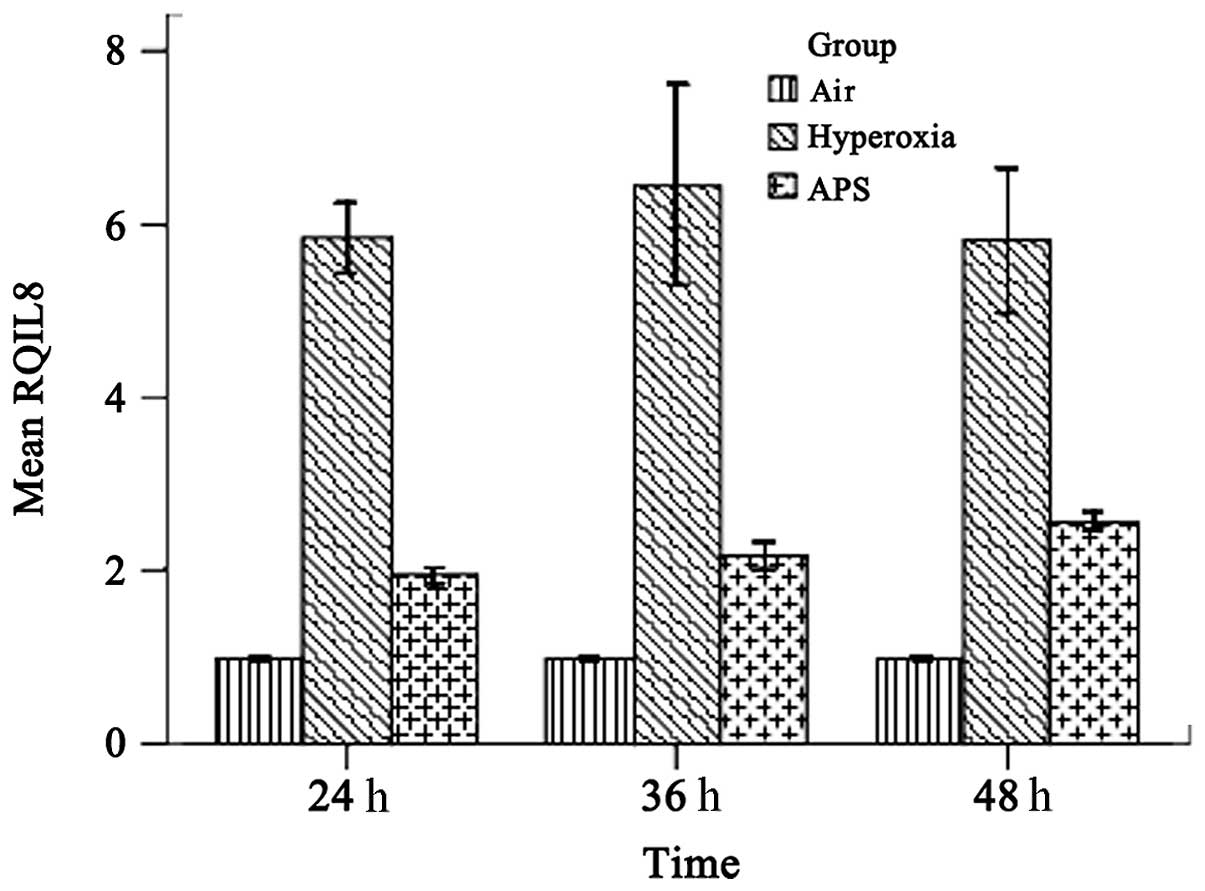|
1.
|
Jobe AH: The new bronchopulmonary
dysplasia. Curr Opin Pediatr. 23:167–172. 2011. View Article : Google Scholar
|
|
2.
|
Joung KE, Kim HS, Lee J, et al:
Correlation of urinary inflammatory and oxidative stress markers in
very low birth weight infants with subsequent development of
bronchopulmonary dysplasia. Free Radic Res. 45:1024–1032. 2011.
View Article : Google Scholar
|
|
3.
|
Gien J and Kinsella JP: Pathogenesis and
treatment of bronchopulmonary dysplasia. Curr Opin Pediatr.
23:305–313. 2011. View Article : Google Scholar : PubMed/NCBI
|
|
4.
|
Fernandez-Gonzalez A, Alex Mitsialis S,
Liu X and Kourembanas S: Vasculoprotective effects of heme
oxygenase-1 in a murine model of hyperoxia-induced bronchopulmonary
dysplasia. Am J Physiol Lung Cell Mol Physiol. 302:L775–L784. 2012.
View Article : Google Scholar : PubMed/NCBI
|
|
5.
|
Doyle LW, Ehrenkranz RA and Halliday HL:
Postnatal hydrocortisone for preventing or treating
bronchopulmonary dysplasia in preterm infants: a systematic review.
Neonatology. 98:111–117. 2010. View Article : Google Scholar : PubMed/NCBI
|
|
6.
|
Needelman H, Evans M, Roberts H, Sweney M
and Bodensteiner JB: Effects of postnatal dexamethasone exposure on
the developmental outcome of premature infants. J Child Neurol.
23:421–424. 2008. View Article : Google Scholar : PubMed/NCBI
|
|
7.
|
Jobe AH: Postnatal corticosteroids for
bronchopulmonary dysplasia. Clin Perinatol. 36:177–188. 2009.
View Article : Google Scholar : PubMed/NCBI
|
|
8.
|
Shao BM, Xu W, Dai H, Tu P, Li Z and Gao
XM: A study on the immune receptors for polysaccharides from the
roots of Astragalus membranaceus, a Chinese medicinal herb.
Biochem Biophys Res Commun. 320:1103–1111. 2004. View Article : Google Scholar : PubMed/NCBI
|
|
9.
|
Zhang BQ, Hu SJ, Qiu LH, et al: Effects of
Astragalus membranaceus and its main components on the acute
phase endothelial dysfunction induced by homocysteine. Vascul
Pharmacol. 46:278–285. 2007.
|
|
10.
|
Yang M, Qian XH, Zhao DH and Fu SZ:
Effects of Astragalus polysaccharide on the erythroid lineage and
microarray analysis in K562 cells. J Ethnopharmacol. 127:242–250.
2010. View Article : Google Scholar : PubMed/NCBI
|
|
11.
|
Gao XH, Xu XX, Pan R, et al: Saponin
fraction from Astragalus membranaceus roots protects mice
against polymicrobial sepsis induced by cecal ligation and puncture
by inhibiting inflammation and upregulating protein C pathway. J
Nat Med. 63:421–429. 2009.
|
|
12.
|
Xu D, Perez RE, Ekekezie II, Navarro A and
Truog WE: Epidermal growth factor-like domain 7 protects
endothelial cells from hyperoxia-induced cell death. Am J Physiol
Lung Cell Mol Physiol. 294:L17–L23. 2008. View Article : Google Scholar : PubMed/NCBI
|
|
13.
|
Song YH, Neumeister MW, Mowlavi A and
Suchy H: Tumor necrosis factor-alpha and lipopolysaccharides induce
differentially interleukin 8 and growth related oncogene-alpha
expression in human endothelial cell line EA.hy926. Ann Plast Surg.
45:681–683. 2000. View Article : Google Scholar
|
|
14.
|
Thornhill MH, Li J and Haskard DO:
Leucocyte endothelial cell adhesion: a study comparing human
umbilical vein endothelial cells and the endothelial cell line
EA-hy-926. Scand J Immunol. 38:279–286. 1993. View Article : Google Scholar : PubMed/NCBI
|
|
15.
|
Jones MK, Sarfeh IJ and Tarnawski AS:
Induction of in vitro angiogenesis in the endothelial-derived cell
line, EA.hy926, by ethanol is mediated through PKC and MAPK.
Biochem Biophys Res Commun. 249:118–123. 1998. View Article : Google Scholar : PubMed/NCBI
|
|
16.
|
Huang J, de Paulis T and May JM:
Antioxidant effects of dihydrocaffeic acid in human EA.hy926
endothelial cells. J Nutr Biochem. 15:722–729. 2004. View Article : Google Scholar : PubMed/NCBI
|
|
17.
|
Aranda E and Owen GI: A semi-quantitative
assay to screen for angiogenic compounds and compounds with
angiogenic potential using the EA.hy926 endothelial cell line. Biol
Res. 42:377–389. 2009. View Article : Google Scholar : PubMed/NCBI
|
|
18.
|
Yu C, Liu X and Zhang Y: Effects of fluid
shear stress on the expression of IL-8 receptor mRNA in EA.Hy926
cells. Sheng Wu Yi Xue Gong Cheng Xue Za Zhi. 24:303–307. 2007.(In
Chinese).
|
|
19.
|
Kunnumakkara AB, Diagaradjane P, Anand P,
et al: Curcumin sensitizes human colorectal cancer to capecitabine
by modulation of cyclin D1, COX-2, MMP-9, VEGF and CXCR4 expression
in an orthotopic mouse model. Int J Cancer. 125:2187–2197. 2009.
View Article : Google Scholar : PubMed/NCBI
|
|
20.
|
Li J-T: Effect of astragalus
polysaccharides on bleomycin-induced pulmonary fibrosis rats. China
Journal of Traditional Chinese Medicine and Pharmacy. 10:2360–2363.
2011.(In Chinese).
|
|
21.
|
Hou Y: Progress in association between
antenatal infection, inflammation and broncho pulmonary dysplasia
of newborn. International Journal of Padiatrics. 36:143–146.
2009.(In Chinese).
|
|
22.
|
Lee JW and Davis JM: Future applications
of antioxidants in premature infants. Curr Opin Pediatr.
23:161–166. 2011. View Article : Google Scholar : PubMed/NCBI
|
|
23.
|
Welty SE: Is there a role for antioxidant
therapy in bronchopulmonary dysplasia? J Nutr. 131:947S–950S.
2001.PubMed/NCBI
|
|
24.
|
Martindale JL and Holbrook NJ: Cellular
response to oxidative stress: signaling for suicide and survival. J
Cell Physiol. 192:1–15. 2002. View Article : Google Scholar : PubMed/NCBI
|
|
25.
|
Chen R, Shao H, Lin S, Zhang JJ and Xu KQ:
Treatment with Astragalus membranaceus produces
antioxidative effects and attenuates intestinal mucosa injury
induced by intestinal ischemia-reperfusion in rats. Am J Chin Med.
39:879–887. 2011.
|
|
26.
|
Xiping Z, Ke W, Yaping Y, Hongchan Z and
Qihui C: Protective effect and mechanisms of radix astragali
injection on the intestinal mucosa of rats with obstructive
jaundice. Mediators Inflamm. 2010:7571912010.PubMed/NCBI
|
|
27.
|
Li XT, Zhang YK, Kuang HX, et al:
Mitochondrial protection and anti-aging activity of astragalus
polysaccharides and their potential mechanism. Int J Mol Sci.
13:1747–1761. 2012. View Article : Google Scholar : PubMed/NCBI
|
|
28.
|
Li X, He DL, Cheng XF, Zhang LL, Yu LH and
Li JJ: Effects of components isolated from Astragalus
mongholicus on expression of p-selectin in shock wave induced
kidney injury in rabbit model. Zhongguo Zhong Yao Za Zhi.
30:1606–1609. 2005.(In Chinese).
|
|
29.
|
Hall G, Hasday JD and Rogers TB:
Regulating the regulator: NF-kappaB signaling in heart. J Mol Cell
Cardiol. 41:580–591. 2006. View Article : Google Scholar : PubMed/NCBI
|
|
30.
|
Zhong C, Zhou Y and Liu H: Nuclear factor
kappaB and anesthetic preconditioning during myocardial
ischemia-reperfusion. Anesthesiology. 100:540–546. 2004. View Article : Google Scholar : PubMed/NCBI
|
|
31.
|
Van Zee KJ, Fischer E, Hawes AS, et al:
Effects of intravenous IL-8 administration in nonhuman primates. J
Immunol. 148:1746–1752. 1992.PubMed/NCBI
|
|
32.
|
Wu Y, Zhang R, Zhou C, et al: Enhanced
expression of vascular cell adhesion molecule-1 by
corticotrophin-releasing hormone contributes to progression of
atherosclerosis in LDL receptor-deficient mice. Atherosclerosis.
203:360–370. 2009. View Article : Google Scholar : PubMed/NCBI
|
|
33.
|
Hao Y, Qiu QY and Wu J: Effect of
Astragalus polysaccharides in promoting neutrophil-vascular
endothelial cell adhesion and expression of related adhesive
molecules. Zhongguo Zhong Xi Yi Jie He Za Zhi. 24:427–430. 2004.(In
Chinese).
|
|
34.
|
Yuan Y, Sun M and Li KS: Astragalus
mongholicus polysaccharide inhibits lipopolysaccharide-induced
production of TNF-alpha and interleukin-8. World J Gastroenterol.
15:3676–3680. 2009. View Article : Google Scholar : PubMed/NCBI
|



